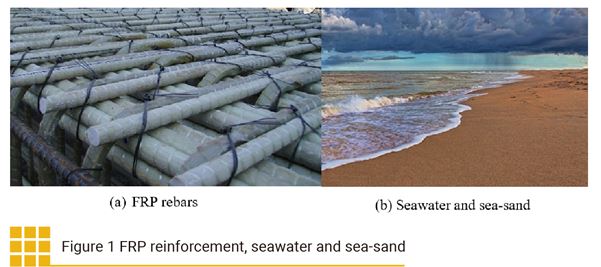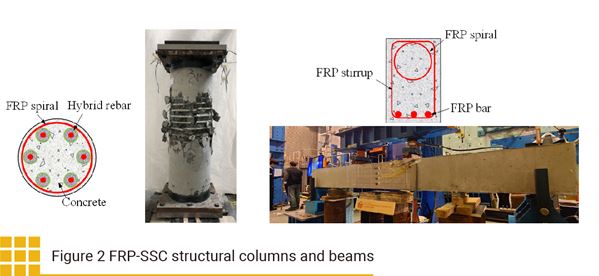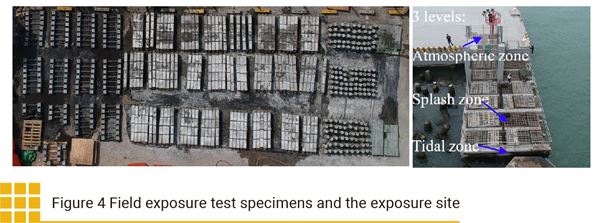Sustainable Marine Infrastructure Enabled by the Innovative Use of Seawater Sea-Sand Concrete and Fibre-Reinforced Polymer Composites

Prospective Students
Research
Graduates and Associates Corner

For other issues, please visit here.
Sustainable Marine Infrastructure Enabled by the Innovative Use of Seawater Sea-Sand Concrete and Fibre-Reinforced Polymer Composites (Contributed by Prof. Tao Yu’s research team)
A major challenge for marine infrastructure is steel corrosion, which is the main cause for infrastructure deterioration. Typically, steel corrosion costs an economy around 3% of its GDP. Another major challenge for marine infrastructure is the shortage of fresh water and river sand (or crushed stone fines) for making concrete. In 2011, Prof. Jin-Guang Teng, President, proposed to address these challenges by replacing steel with fiber-reinforced polymer (FRP) (Figure 1a) as the reinforcing material which allows the direct use of seawater and sea-sand in making concrete (i.e. seawater-sea-sand concrete or SSC in short) (Figure 1b). Eventually marine infrastructure will enjoy a longer life span, while energy consumption and environmental pollution will be less in the construction process.

In 2018, a project led by Prof. Teng was awarded a grant of more than HK$52.4 million (including matching funding from the local participating universities) to develop new types of reinforced concrete structures made of FRP and SSC (referred to as FRP-SSC structures). The amount of funding is the largest among the five projects awarded in the eighth round of Research Grants Council (RGC) Theme-based Research Scheme 2018/19. In Mar 2020, Prof. Tao Yu, Professor, took over the role of the Project Coordinator from Prof. Teng who assumed his duty as the President of PolyU in Jul 2019 and now serves as the Advisory Project Coordinator of the project.
The research project includes the development of innovative steel-free structural forms as well as new methods for the design, construction and performance monitoring of FRP-SSC structures. A key scientific challenge for the team is the establishment of a multi-scale, multi-physics approach for predicting the long-term performance of FRP-SSC structures in a marine environment over a service life of more than 50 or even 100 years.
Starting from Jan 2019, the project team has made significant progress and some breakthroughs. The project team has proposed design mix proportions for SSC and successfully developed ultra-high-performance seawater sea-sand concrete with a compressive strength higher than 180 MPa. Various innovative forms of FRP-SSC structural members and connections have also been proposed and investigated through experimental and theoretical studies (Figure 2). In addition, the team has developed optical fibre-based humidity and pH sensors for monitoring the moisture content and pH-value inside FRP-SSC structures (Figure 3). To understand the fundamental mechanism of SSC and FRP, molecular dynamics simulations of material structures of SSC and fibre/matrix interfaces have been carried out. Furthermore, accelerated exposure tests and field exposure tests on a large number of FRP, SSC and FRP-SSC structural members have commenced (Figure 4). Partial results of the project have become available through publications in international SCI journals.



We use Cookies to give you a better experience on our website. By continuing to browse the site without changing your privacy settings, you are consenting to our use of Cookies. For more information, please see our Privacy Policy Statement.
Your browser is not the latest version. If you continue to browse our website, Some pages may not function properly.
You are recommended to upgrade to a newer version or switch to a different browser. A list of the web browsers that we support can be found here




